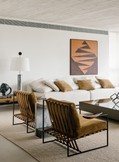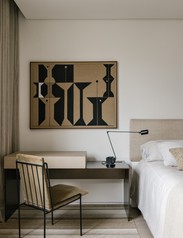
Consolação Apartment
2021-2022
The design of this apartment aims to create spaces in dialogue, integrating some
social areas, while following, at the request of the clients, a very specific aesthetic,
inspired by New York lofts.











